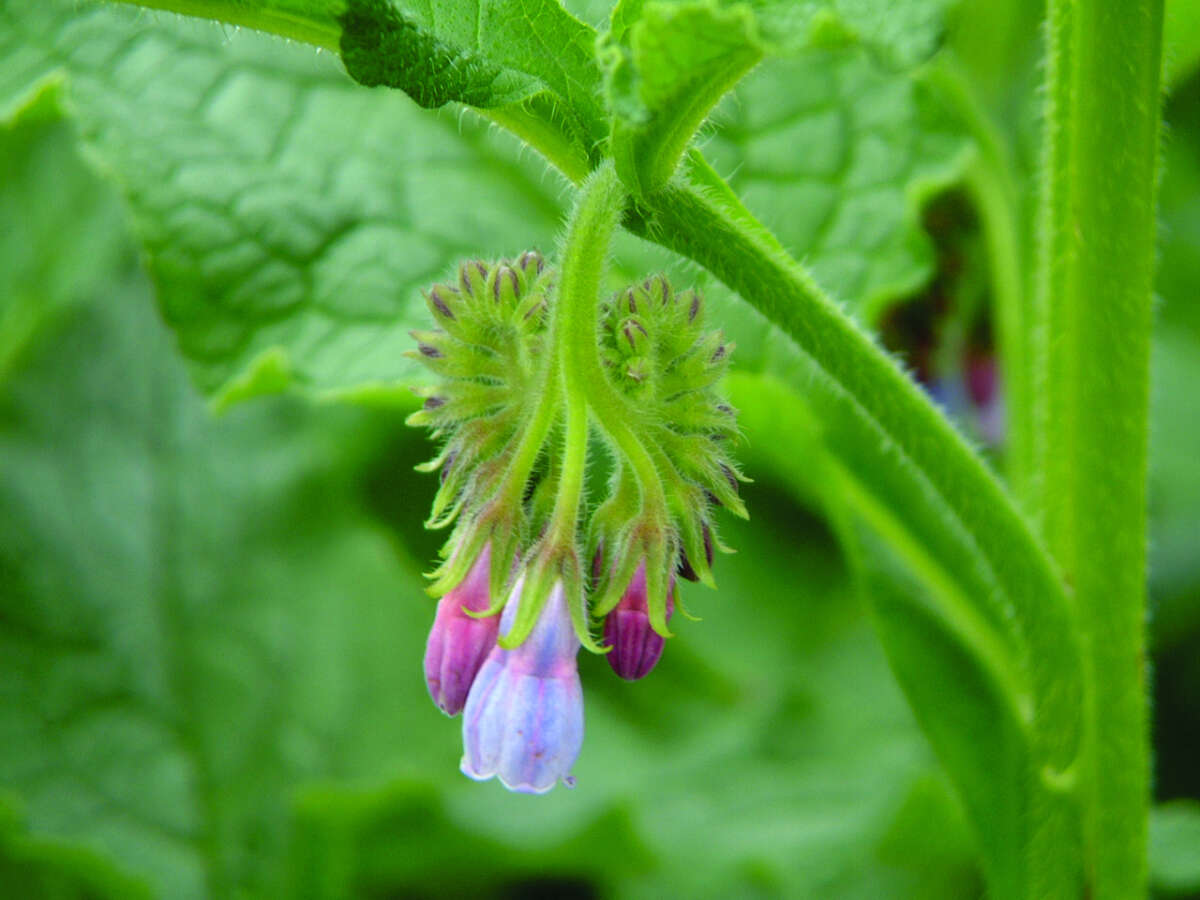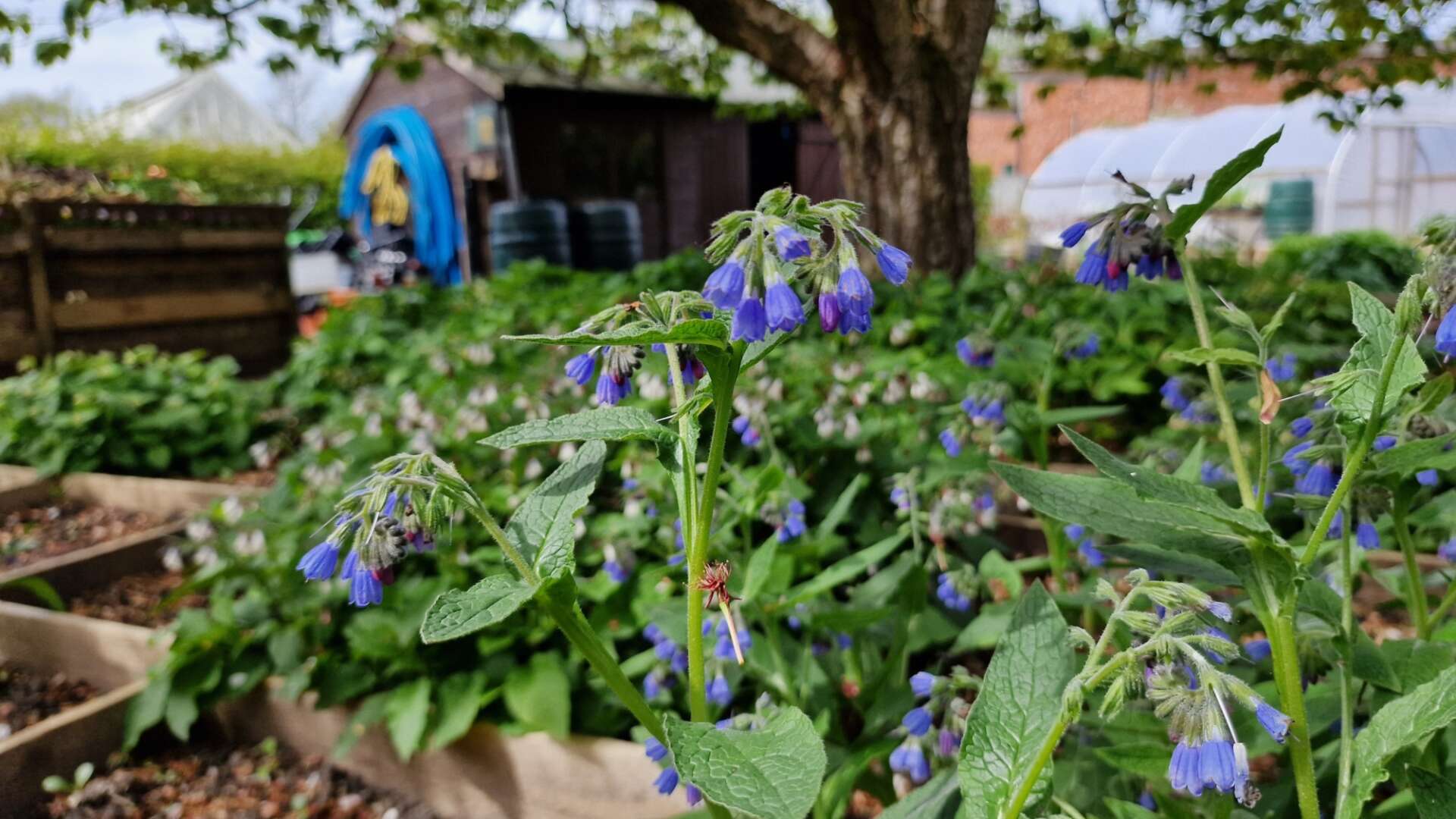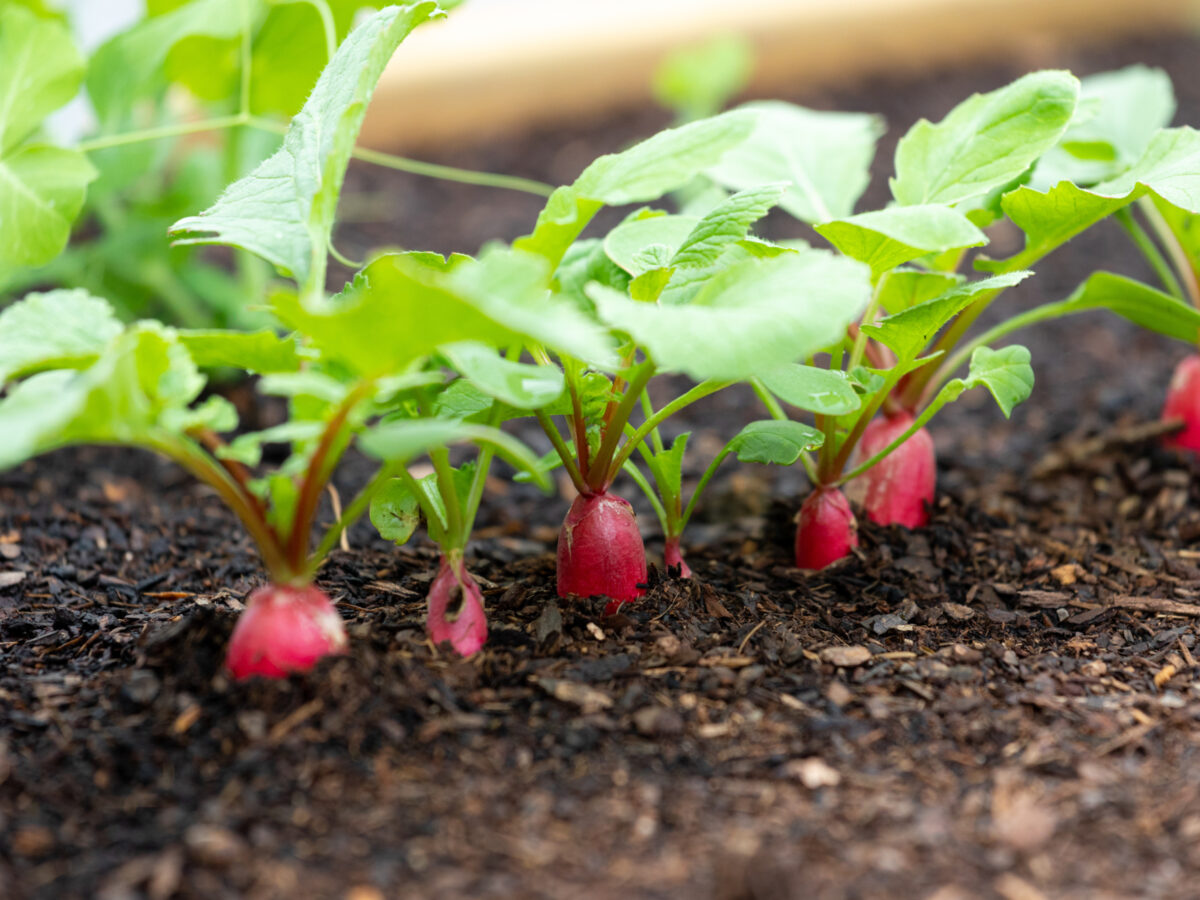Soil
How to use comfrey

Comfrey is very easy to grow and harvest, producing large quantities of leaves that are rich in nitrogen, phosphorus and potassium - all nutrients needed by growing plants.
When to harvest comfrey leaves
If your comfrey is newly planted, cut once in late spring and allow the plant to recover until the following year.
If your plant/s are established, leaves can be harvested approximately every six weeks from June. Don't harvest later than September as the plant will need to recover before it dies back in winter.
Comfrey leaves can be used in various ways:
- to make a liquid plant feed
- as a fertilising mulch
- as a compost activator
- to make leafmould potting compost
How to make comfrey liquid fertiliser
Follow these simple steps:
- Cut off the leaves about 5cms above soil level. Wear gloves, as the stems are covered in stiff hairs that can irritate the skin.
- Fill a bucket or barrel with water and add approx 1kg of cut or bruised leaves to every 15litres of water. You needn’t be too precise!
- Press the leaves down firmly so they are covered with water, and cover the container.
- After four to six weeks a noxious (very) smelly brown liquid is ready for use. There is no need to dilute.
- Strain off the sludge at the bottom, and put it on the compost heap.
To make a concentrate, you don’t need water:
You will need:
A 2-litre plastic drinks bottle, without a cap
A collecting vessel – large yoghurt pot, ice cream carton or similar
- Turn the bottle upside down and cut off the bottom.
- Pack in the cut and bruised comfrey leaves so the bottle is full. Press them down firmly.
- Cover the open end with a polythene bag, held in place with an elastic band, to prevent drying out.
- Stand/fix/wedge the bottle upside down so that it will drip into your collecting vessel.
- As the leaves rot, a brown comfrey liquid will drip out of the bottle into the collecting vessel below.
- Add fresh cut/bruised leaves, pressed down firmly, into the bottle, to keep a constant supply of rotting material
- This concentrate should be watered down according to its strength – when thick and black, dilute 1 part feed to 20 parts water; when thin and brown, dilute 1 to 10. You needn’t be too precise.
How to use your comfrey liquid fertiliser:
- Use as a summer feed for tomatoes, peppers and cucumbers (apply as soon as the flowers have set fruit).
- For hanging baskets and pot plants.
- For other hungry flowering plants such as clematis and dahlias.
Make your own comfrey feed with Emma 🔗
Learn more about making comfrey liquid plant food with our head gardener Emma's tutorial...

Other ways to use comfrey leaves
- Place cut or bruised comfrey leaves in alternate layers throughout your compost heap. Their decomposition will encourage bacterial action causing the heap to heat up and speed up the composting process.
- Use as a mulch. Chop up comfrey leaves with grass cuttings, and place a 5cm layer on the surface of the soil around all plants. This will slowly rot down to provide nutrients and act as a mulch to keep in moisture and help control weeds.
- Add fresh cut leaves to your leafmould heap. Their nutrient-rich liquid will be absorbed, making it a perfect medium for growing seeds and potting compost.
- Fertilise the bottom of your potato and runner bean trenches with a layer of comfrey leaves. As they break down, the plant roots will access the potassium-rich fertiliser.
You may also like


Love our growing advice?
Get a direct link to our horticultural advice team, as well as members-only online resources with a Garden Organic membership.